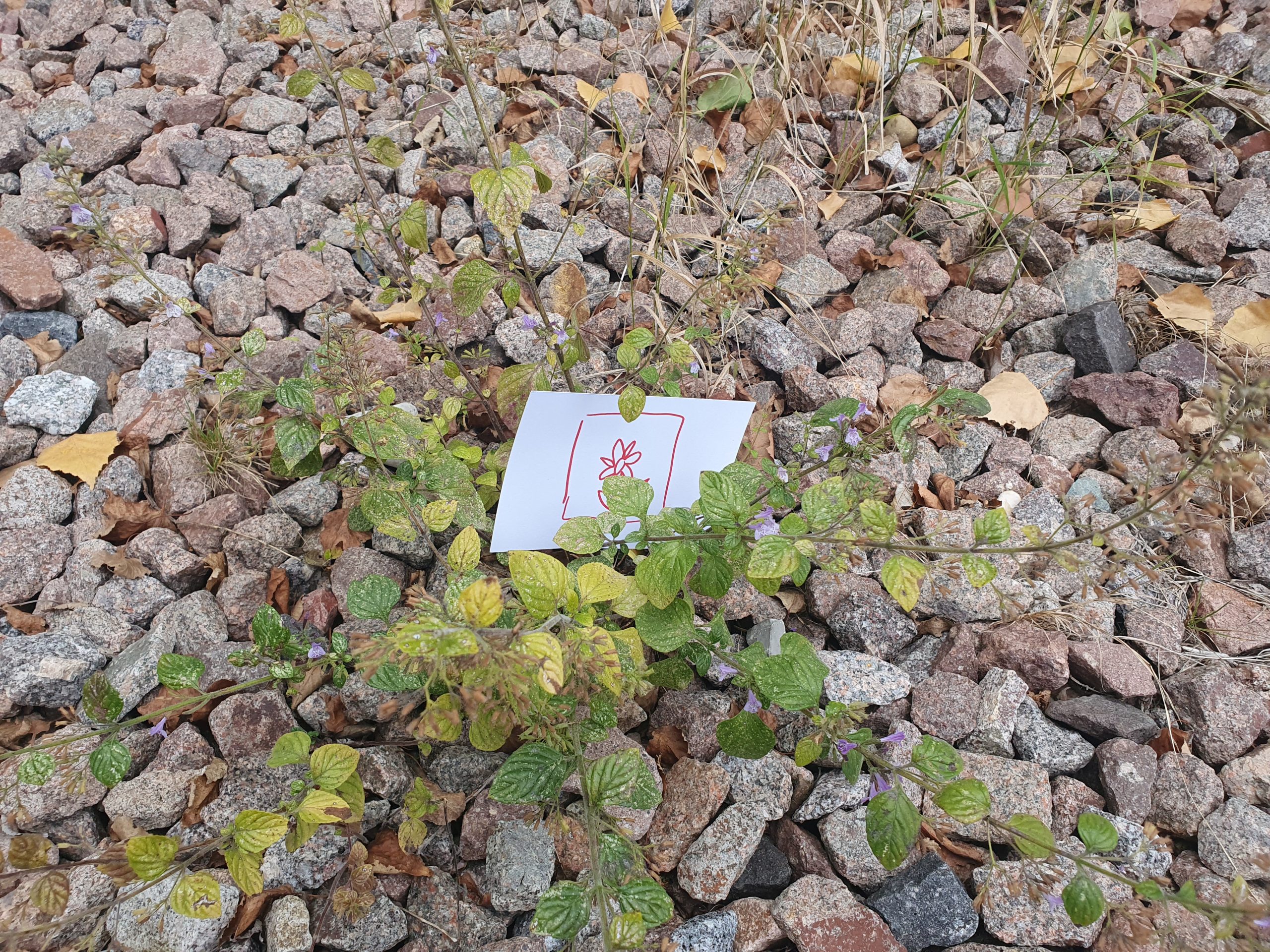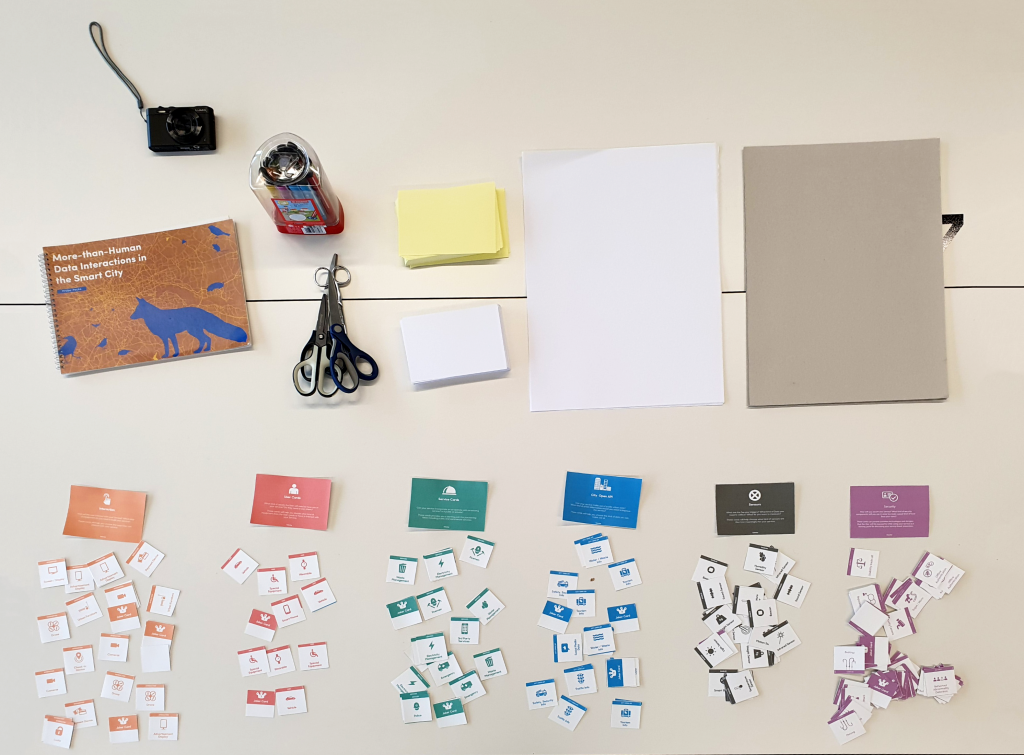I am a nettle: approaching more-than-human service design
by Viktor Bedö


The struggle of shifting perspective
The workshop title ‘Data Interactions In The More-than-Human Smart City’ on the first reading suggests questions about sensor types, algorithms, interfaces, devices, apps, mobility solutions and what they afford to hedgehogs. I would argue that the workshop goes far beyond that in not only investigating knowledge embodied in design, but the frontiers of the knowable for designers’ bodies.
Feminist thought foregrounds the stakes of de-centering from an exclusively human perspective for the survival of the planet. Philosophy of mind wrestles with humans’ capability of accessing others’ minds and adopting others’ perspectives; be it other humans, bats or thermostats. Performance studies acknowledges that although enacting non-humans does not allow humans to turn into non-human but that qualifies as a potent pre-representational tactic for turning to them. More-than-human design speculates about and struggles with adopting perspectives of other-than-human beings or things to grasp other-than-human needs and affordances.
I am a nettle in the Garden of Earthly Delights. Standing on the asphalt, I am surrounded by plant boxes, vegetable beds, bushes, trees. Around me a worm, a rat, a bird, and other creatures are trying to find their place in the garden, just like I do. I am motivated, but clueless. I know that I eat water, soil and sun. I know that I am larval food for several species of butterflies. I gather that the grassy patch around a small tree could be a good place for me. Then it hits me: how am I going to move there? … I long for interaction with others. Do I see them? Do I smell them? What physical or chemical exchange will alert me about their presence and what will we exchange. Enacting a nettle is a struggle. I am set up for failing, but there is no way around failing forward.
3 steps of non-human service design
The strength of the MoTH City workshops lies in roleplaying other-than-humans in order to probe and reflect on how the city could meaningfully interact with them. One of my takeaways from this inspiring workshop was that thinking about more-than-human data requires speculating about services for non-human beings.
The experience of adopting other-than-human perspectives at the MoTH City workshop together with my inclination to explore service design pathways, motivated me to develop a new workshop setup that combines the probes from the MoTH City project with a toolkit for designing IoT (internet of things) based services. I hosted a three-hour workshop for bachelor students in my experimental design practice course called ‘Grasping the Future City’ at the Critical Media Lab Basel. The IoT Service Kit is an open access card set developed by the innovation agency Futurice* to facilitate the conversation between technologists and diverse stakeholders about IoT-enabled services in homes, industry sites and the city. The cards depict sensor types, interaction types, devices, users, data sets, all of which are building blocks of IoT services. I incorporated the MoTH City probes in the ‘Grasping the Future City’ class as a way to enable students to shift from an exclusively human perspective and to create an ‘other-than-human extension card set’ for the IoT service kit.
In the first stage of the workshop, we attempted to embody non-humans such as worms, snakes, bees, lime trees by roleplaying their sensing and sensibilities. Students had 10 minutes to research the internet about the urban being of their choice: What does it like? What does it dislike? What does it like to interact with? What does it produce? What does it consume? After this quick research, we went out on the campus to roleplay this being while interacting with the environment and other beings.
In a second stage, we used the ‘Sign posting for non-humans – Traffic rules’ exercise from the MoTH City probes. The students produced simple traffic signs with relevant information for their species, placing them in the environment or on themselves. Signs involved directions, warnings and bans such a warning for bees to fly on to more interesting plants, a ban on activities that cause vibration or a welcome note for insects on a lime tree.
In the third stage of the workshop, we used the IoT service design kit to design services for some of our non-human species, such as worms, bees, or snakes. In doing so, we introduced new cards for a future ‘more-than-human’ extensions card set for the IoT service design kit.
One service was a temperature drop early warning system for bees and snakes. This speculative service used regional weather data and local temperature sensor information to predict radical temperature drops to which snakes and bees who–as far as our imperfect research suggested–would react sensitively, and would issue an alert. While the availability of weather data is straightforward, the means of delivering the alert to bees and snakes called for introducing new kinds of devices and interactions to the more-than-human extension pack. The choice that day fell on hormonal and scent-based messaging delivered either by a drone-mounted vaporiser or to the soil via water solvent.
The closing discussion of the workshop session touched on the insufficiency of human capacities for speculating about other-than human existence in the city. But also, how the awareness of this insufficiency should not stand in the way of incorporating other-than-human needs into designing cities. The paper prototype of the ‘temperature drop early warning system’ triggered a discussion about solutionism, mindfulness about invasive technologies, and the responsibility that comes with intervening. The whole experiment made evident the need for strategies for designing meaningful more-than-human services and the identification of meaningful data sources to fuel those services.
*iotservicekit.com

